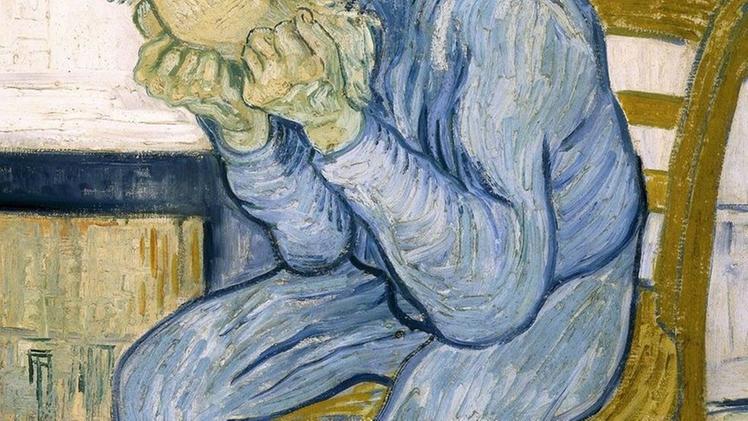Caught in the net. The mind in the web era
Raffaele Simone. Presi nella rete. La mente ai tempi del web.
Garzanti, Milan 2012.
How is human intelligence changing in the Internet era? How do big or small
digital screens modify our reading and writing ways and change the concept
itself of texts? The answer to these challenging questions are discussed in
the essay Caught in the net. The mind in the web era, the last
stage of an interesting study made on the cognitive and cultural effects of
the digital revolution which Raffaele Simone began ten years ago with the
publication of his successful and much discussed book La Terza fase. Forme di sapere che stiamo perdendo. (The Third
Phase. Forms of knowledge we are losing)
The context
– The exploration of new forms of textuality and various other key issues
starts from a highly critical context analysis which looks at the advent of
the tablet and smartphone with diffidence and preoccupation. Simone
describes our era as a mediasphere, a universe populated by
converging technological devices which are mobile and omnipresent, objects
we cannot do without (literally!). To this, they have induced radical
transformations by claiming and invading our noosphere (our mind)
and our personal ecology (our time spaces). According to the Italian
scholar, the advent of the web and internet connected devices has been the
cause of an extraordinary exaptation of the human kind because
they have given rise to functions and needs which were previously
inexistent (the reverse process is adaptation i.e. it is the
function which creates the organ).
The senses and intelligence
– Immersed in this anomic world all so powerful and compelling, Man
experiences the decline of knowledge, the involution of body parts and the
hierarchical redefinition of the sensorial organs. As a result, there is a
growing pre-eminence of listening and non-alphabetic vision which
permits only a perception of numerous and coexistent data that necessitates
“a low level of command”. Sequential intelligence, nurtured by books and
writings permits a straightforward method of learning but – as Simone warns
– leaves space for simultaneous intelligence which in many ways is more
primitive and facilitated by the widespread use of iconic codes. Such
method of learning is characterized by a prevailing contemporaneity of
stimulus and elaboration which leads to phenomena like impoverishment of
language, deterioration in literary skills, alienation to reading,
weakening of mnemonic capacity and lack of concentration.
Old and new forms of textuality –
Like the alphabet – Simone points out – even “its key material, the text
and the book have gradually lost their privileged terrain where the eyes
once looked upon”. The digital book has transformed the classic book into a
diverse entity with a deeply social and interactive nature which is able to
store enormous quantities of data in it. The classic paper version has lost
its steadfastness and has been transformed into a pocket size plastic
object, it vanishes and shrinks in various ways depending on the technology
used. In this way Simone feels a kind of detachment now respect to what he
previously had with paper books. He presents the digital book like an ever
growing “open and accessible object”, something which can be interpolated
continually.
Reading and Writing –
The introduction and widespread use of computers first -and the telematics
web later on- have caused profound changes in reading and writing styles
both on a ethology level (i.e. behaviour and rules) and on an ecology level (the organised environment where the changes take
place). If we look at the classic way of reading, our thought takes us back
to intimate atmospheres, silence, solitude and experiences of a registered
polymorphic sensorial nature. Immigrant digital readers well know
this experience when they enjoy reading a “paper” book. Quite the contrary
with digital natives, well versed in the digital culture and fuelled by the
widespread and pervasive connectivity experience. They experience things
through multi-use and multi-media and consume all in crowded and noisy
places. As for writing, one only has to look at the infinite possibilities
and variations of texts which technology allows to understand how
information technology has revolutionised the process and elaboration of
thought.
These are only a few of the points discussed in Presi nella rete –
Caught in the net which offer the reader a time to question and reflect in
a play of interaction among various scientific subjects and researchers and
theorists cites who have adjourned, revised and studied in-depth theories
over a period of time. It does not offer any particularly new ideas to what
we already know, if anything, it helps the learner to guide himself round
the subject and gives a 360° panorama for the more educated reader by
giving new leads for investigation and systemization. An informative essay
with extensive findings, it makes hints about the relationship between mediasphere and democracy and the problems of an ever growing
digital school where new forms of learning and didactic methodology are
being used. Close attention is drawn to the eloquent thoughts on textuality
and above all the process of deconditioning of traditional variables (the
rigidity of the space of textual production has been surpassed); the book
is the means par excellence to preserve and transmit knowledge; reading
despite the digital era is a vital means of alimenting the brain as
neuroscientists repeatedly state; writing is a technique which necessitates
complex abilities but it is also a prosthetic device which amplifies
amongst others the capacity to reason and memorize things.
A full-scale analysis, positioned midway between old and new theories, it
evokes contrasting feelings in who is “moderately” digital – who cultivates
the traditional idea of reading and writing from childhood through seeing,
leafing through and smelling books but is able to appreciate the novelties
which are introduced in technology. Presi nella rete, Caught in
the net, if we like is a journey through memory which fervidly sustains the
reasons for traditional culture but at the same time seeks to recognise the
merits of digital culture. Its author – a worthy academic, refined and
disenchanted polemicist, author of essays and pamphlets widely acclaimed
all over the world – admits that he himself “was born in the first half of
the last century” and is convinced that the explosion of telematics is “in
many ways one of the many extraordinary manifestations of collective folly
(and at times idiocy) which has ever happened. But not all evil is
harmful…”
On closer observation, the author’s criticisms of the web, more than an
apocalyptic vision -to put it in Umberto Eco’s words- they derive from a
deep pressing preoccupation which unites the apparent ungovernability of
technological devices to that of oblivion, of the refusal of the past in
its various forms. However, the plaintive alarm given out by the author
raises questions. It is difficult to share all his views – in particular
the description of a 2.0 humanity, driven to a point of no return by
obsessive-compulsive rituals and enslaving, anxiety inducing devices. It is
true that the digital world is a chaotic world which is difficult to
represent on a map with limits and where temptations undoubtedly lie but it
also offers infinite resources.
Scholars should deliberate well before getting carried away with
technological fundamentalism and likewise show sound judgement and have a
broad-minded approach towards new technology advancements otherwise one
risks falling into the trap of contrasting integralism with integralism.














